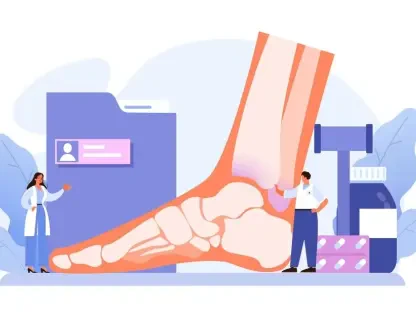Imagine a single mother in Florida, juggling bills and relying on subsidized health insurance to keep her family covered, suddenly facing the threat of losing that lifeline due to sweeping policy changes. This scenario is becoming a stark reality for millions as a new budget law, signed by President Trump on July 4, reshapes the Affordable Care Act (ACA) marketplaces and slashes Medicaid funding by over $1 trillion over the next decade. With non-expansion states like Florida, Georgia, and Texas already vulnerable from years of resisting Medicaid expansion, the stakes couldn’t be higher. This roundup dives into diverse perspectives from policy analysts, hospital leaders, and state officials to unpack the consequences of this legislation, comparing differing views on its impact and exploring potential paths forward for those most affected.
Unpacking the Health Care Shake-Up: What Experts Are Saying
The recent budget law has sent shockwaves through the health care landscape, altering the ACA framework with tighter eligibility rules and shorter enrollment periods while imposing deep cuts to Medicaid. Analysts across the board highlight that these changes threaten to reverse significant gains in coverage, particularly in states that have historically opposed Obamacare’s expansion. Projections suggest a staggering 870,000 Floridians could lose ACA coverage by 2034, a figure that underscores the scale of potential disruption in just one state.
Differing opinions emerge on the intent behind these reforms. Some policy experts argue that the measures aim to streamline bloated systems and reduce federal spending, pointing to the ballooning costs of health care programs. Others, however, see a deliberate effort to curb access, especially in resistant states where reliance on marketplace plans is high due to the absence of expanded Medicaid. This debate sets the stage for a deeper look into how various stakeholders—from state governments to health care providers—view the unfolding crisis.
A recurring theme among industry observers is the amplified vulnerability in non-expansion states. With nationwide ACA enrollment at 24.3 million, the consensus is that any rollback could hit hardest in regions already lagging in coverage. This roundup aims to synthesize these perspectives, offering a balanced view of the challenges and potential solutions as the nation grapples with this transformative policy shift.
Diving into the Fallout: Coverage Losses and Systemic Strain
ACA Enrollment Barriers: A Divisive Policy Move
One of the most contentious aspects of the new law is its impact on ACA enrollment, with restrictive measures like stringent eligibility checks and truncated sign-up windows drawing sharp criticism. Data projections indicate a potential loss of coverage for millions, with some estimates highlighting that Florida alone could see hundreds of thousands uninsured in the coming years. Health policy analysts caution that such barriers could undo years of progress in expanding access to affordable care.
Contrasting views surface on the purpose of these restrictions. Certain fiscal conservatives applaud the move as a necessary step to control federal expenditure, arguing that unchecked enrollment has strained budgets. On the other hand, state officials from places like Kansas express deep concern, suggesting that these changes disproportionately harm low-income residents who depend on marketplace plans as their only viable option for insurance.
Hospital administrators also weigh in, noting that reduced enrollment could destabilize insurance markets by shrinking the risk pool. This perspective emphasizes the ripple effects beyond individual coverage, pointing to broader economic implications for health care providers. The divide in opinion reflects a larger tension between cost-saving goals and the fundamental need for accessible care.
Non-Expansion States: Disproportionate Impact Under Scrutiny
In the 10 states that opted against Medicaid expansion, the fallout from this law appears particularly severe, as residents rely heavily on ACA plans to fill coverage gaps. Experts note that states like Georgia could face coverage losses comparable to much larger states, despite smaller populations, due to this dependency. Florida, a leader in ACA enrollment, stands to see up to 2.2 million uninsured if federal subsidies lapse, amplifying existing disparities.
Some state leaders in these regions maintain a defiant stance, viewing the law as a chance to push back against federal overreach in health care. They argue that maintaining independence from expansion preserves state autonomy, even at the cost of increased uninsured rates. Conversely, health advocates counter that this resistance exacerbates market instability, potentially driving up premiums and leaving more people without options.
Analysts also highlight an opportunity amid the crisis: mounting pressure might push resistant states to reconsider Medicaid expansion. This potential shift is seen as a critical pivot point, with some suggesting that federal incentives could sway long-standing opposition. The discussion reveals a complex interplay of politics and practicality in addressing the health care needs of vulnerable populations.
Medicaid Cuts: A Trillion-Dollar Challenge to Safety Nets
The law’s reduction of Medicaid funding by over $1 trillion over a decade has sparked alarm across various sectors, with estimates suggesting 10 million could lose coverage nationwide. The Congressional Budget Office’s projections paint a grim picture, particularly for low-income and disabled individuals who form the backbone of this program. Policy experts stress that the cuts create a cascading effect on state budgets, even in non-expansion regions.
Hospital leaders, especially those in rural areas, voice concerns about financial sustainability, as reimbursement rates dwindle and uninsured patient numbers rise. Although a $50 billion federal fund offers some relief for rural facilities, many argue it falls short of addressing the broader impact of funding slashes. This perspective underscores the hidden pressures on health infrastructure that transcend state policy choices.
A contrasting opinion comes from proponents of fiscal restraint, who see the cuts as a long-overdue recalibration of an overburdened system. They contend that states must innovate with limited resources rather than rely on federal handouts. This viewpoint clashes with warnings from analysts that such reductions could lead to widespread hospital closures, deepening the crisis in access to care across resistant states.
Subsidy Expiration: A Looming Crisis for Affordability
Another focal point of concern is the potential expiration of enhanced ACA subsidies, which could trigger premium increases of over 75% on average, leaving millions more uninsured by 2034. Data from budget analysts illustrates the scale of this threat, with low-income families in non-expansion states facing the greatest risk of being priced out of coverage. The urgency of extending these subsidies is a common thread among health policy discussions.
Some fiscal policy voices critique the reliance on federal subsidies, arguing that sustained government spending fuels inefficiency in health care markets. They advocate for market-driven solutions to control costs, even if it means short-term pain for consumers. In stark contrast, community advocates share stories of individuals who describe subsidized plans as their only barrier against medical bankruptcy, emphasizing the human toll of potential lapses.
The debate over subsidies also sparks speculation about future legislative battles. Health care observers suggest that bipartisan support for extensions could emerge if public outcry grows, though entrenched political divides pose a significant hurdle. This mix of opinions highlights the critical role subsidies play in either mitigating or exacerbating the broader health care crisis under the new law.
Practical Insights: Navigating the Consequences
Synthesizing the range of perspectives, the staggering projections of coverage losses—potentially millions uninsured—and the risk to rural hospitals stand out as urgent issues. Non-expansion states face a disproportionate burden, with personal stories of families fearing the loss of affordable care adding a human dimension to the data. Policy analysts and advocates agree that the cost of inaction could be catastrophic for both individuals and systems.
Actionable steps emerge from these discussions, including a push for resistant states to revisit Medicaid expansion as a buffer against marketplace disruptions. Extending federal subsidies is another widely supported measure, seen as a crucial stopgap to prevent premium spikes. Community-level efforts, such as bolstering enrollment assistance programs, also gain traction among local leaders as a way to mitigate immediate impacts.
Engagement remains key, with recommendations for citizens to stay informed about state policy shifts and support health care advocacy initiatives. These practical suggestions aim to translate complex policy debates into tangible actions, empowering communities to navigate the challenges posed by the new law. The diversity of opinions underscores the need for tailored solutions that address both systemic and individual needs.
Reflecting on a Divided Health Care Landscape
Looking back, this roundup captured a spectrum of reactions to Trump’s budget law, revealing deep divides in how stakeholders perceive its impact on resistant states. The synthesis of expert analyses, state responses, and community concerns painted a picture of a health care system at a critical juncture, with non-expansion states bearing significant strain. Discussions around ACA enrollment barriers, Medicaid cuts, and subsidy expirations highlighted the multifaceted nature of the crisis.
Moving forward, a renewed focus on bipartisan dialogue could pave the way for sustainable reforms, ensuring that coverage losses are minimized. States might consider innovative partnerships with federal programs to bolster local health infrastructures, particularly in rural areas. Additionally, amplifying grassroots efforts to educate and enroll vulnerable populations stands as a vital next step in safeguarding access to care, offering hope amid uncertainty.









